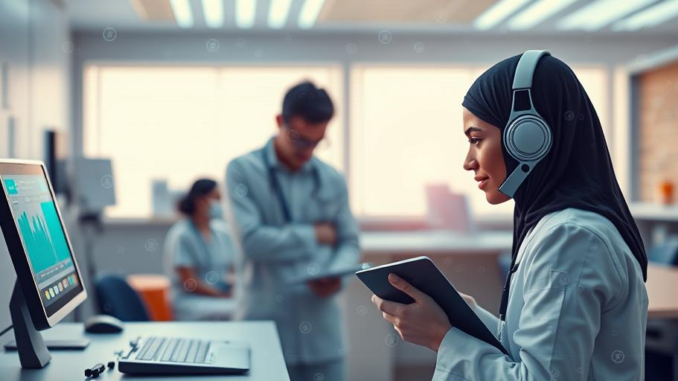
Summary
This article explores the transformative impact of AI on diabetic retinopathy screenings, emphasizing increased accessibility, early detection, and cost-effectiveness. We delve into the advancements in AI algorithms, their integration into healthcare systems, and the potential to prevent blindness in millions. Join us as we explore the future of diabetic retinopathy care and its potential to reshape global healthcare.
Start with a free consultation to discover how TrueNAS can transform your healthcare data management.
** Main Story**
AI: Changing the Game for Diabetic Retinopathy Screenings
Diabetic retinopathy (DR) is a real problem. It’s a leading cause of blindness in working-age adults, which is why regular screenings are so important for early detection. You see, the earlier you catch it, the better the outcome. But, traditional methods can be a pain, especially for people in underserved areas. That said, artificial intelligence (AI) is really changing things, promising to make screenings more accessible, improve early detection, and lead to better patient results overall.
How AI Algorithms Are Making a Difference
AI algorithms are what’s making all of this possible. They are the driving force behind this transformation. Think about it: they’re trained on literally millions of retinal images. Because of this, these algorithms can independently analyze fundus photographs, spotting signs of DR with incredible accuracy. What does this mean? Well, we don’t necessarily need a specialist right away. Screenings can happen in primary care clinics, pharmacies, or even the emergency room. This accessibility is huge, especially for people in rural areas who don’t have easy access to eye specialists, right? And, you know, sometimes, AI-powered systems can pick up on subtle changes even earlier than traditional methods, allowing for quick intervention, which can stop irreversible vision loss.
More Access, Lower Costs: A Total Win
Integrating AI into DR screening programs is a win-win. It lets us expand access and cut healthcare costs at the same time. Systems, like the EyeArt system that’s been cleared by the FDA, can generate screening reports in seconds. Seconds! This really speeds up the process and takes some of the load off healthcare pros. All that increased efficiency translates to lower costs per patient compared to manual screening. Plus, by catching things early and getting people treatment quickly, AI can prevent more costly interventions down the line. We’re talking about saving healthcare systems serious money in the long run. The research I’ve seen says that incorporating AI-powered scans into routine care could prevent thousands of cases of blindness. And, the savings could be in the millions. Hard to ignore that, right?
Tackling Disparities, Promoting Fairness
One of the most promising things about AI-driven DR screening is how it can help address health disparities. Sadly, things like socioeconomic status, race, where someone lives… they can all get in the way of regular eye exams. But, by making screenings more accessible and affordable, AI can help close those gaps. So, everyone with diabetes has a fair shot at getting the eye care they need. Initiatives like the Collaborative UC Teleophthalmology Initiative and partnerships between organizations like Eyenuk and the American Academy of Ophthalmology are working to bring DR screening to underserved communities, and that’s a good thing.
The Future Looks Bright
Okay, so AI isn’t perfect, but the potential benefits are just massive. As AI algorithms continue to get better and integrate into our healthcare systems more smoothly, I think the future of DR care is really bright. Not only can AI-powered systems detect DR, but they can also predict future risk. Because of this, we can create personalized screening schedules and come up with proactive interventions. This move towards individualized care can boost patient outcomes even more and ease the burden on healthcare resources. AI can also help educate patients about DR and why it’s so important to get screened regularly, which, in turn, empowers them to take charge of their eye health.
What’s Next? Challenges and Opportunities
Like any tech advancement in healthcare, there are challenges to think about. We need to make sure AI algorithms are accurate and reliable across all kinds of populations. We need more research and validation to ensure this, you know? And, we absolutely have to address concerns about data privacy and security. Data protection is paramount. However, AI is a powerful tool in the fight against this debilitating disease. The ability to transform DR screening and prevent blindness in millions makes it worth the effort. As AI tech keeps evolving, I’m sure we’ll see even more innovative applications that will make DR screening programs even more accessible, affordable, and effective worldwide. Anyway, that’s my take on it. Hope you found it helpful!
Disclaimer: The information provided is current as of April 6, 2025, and is subject to change with future developments.


Be the first to comment